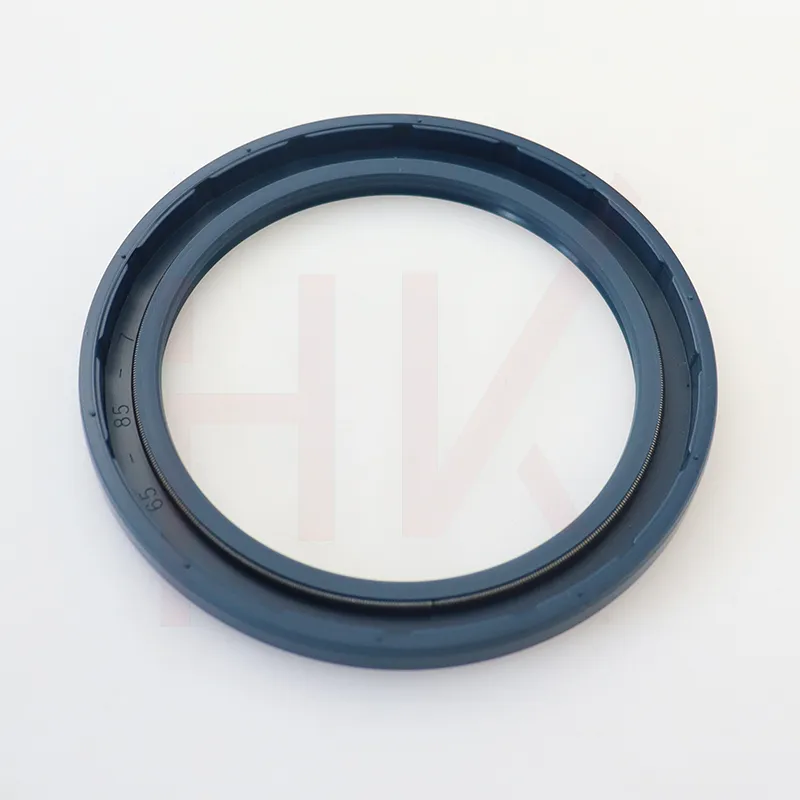12 月 . 03, 2024 16:30 Back to list
cylinder wiper seal
Understanding Cylinder Wiper Seals Function, Design, and Applications
Cylinder wiper seals are crucial components in hydraulic and pneumatic systems, serving a vital role in ensuring the efficient operation of machinery and equipment. These seals are specifically designed to prevent the ingress of contaminants, such as dirt, dust, and moisture, into the cylinder while simultaneously allowing the smooth operation of the piston within. This article will explore the function, design, materials, and applications of cylinder wiper seals, highlighting their significance in various industrial settings.
Function of Cylinder Wiper Seals
The primary function of cylinder wiper seals is to protect the internal components of cylinders from external contaminants. In most hydraulic and pneumatic systems, the movement of the piston generates a potential for the ingress of debris. If left unchecked, this contamination can lead to increased wear on the cylinder walls and the piston seals, ultimately resulting in system failure or decreased efficiency.
Wiper seals create a barrier that keeps contaminants out while allowing for unobstructed movement of the piston. They are strategically positioned at the rod end of the cylinder, ensuring that any dirt or particles that may be present on the rod are wiped away as the rod extends or retracts. This preventative measure significantly extends the lifespan of both the seals and the cylinder itself, providing noteworthy cost savings through reduced maintenance and downtime.
Design Characteristics
The design of cylinder wiper seals is critical to their effectiveness. They are typically made from flexible materials that can withstand the rigors of continuous movement while maintaining the necessary sealing force. The basic design includes a lip that comes into contact with the rod, forming a tight seal that scrapes away contaminants.
Common design variants include single-lip and double-lip wipers. Single-lip designs are effective for environments with minimal contamination, while double-lip wipers provide enhanced protection in more challenging conditions. The geometry of the seal is also important, with many designs featuring a dust lip that further enhances their ability to keep contaminants at bay.
Materials Used in Manufacturing
cylinder wiper seal

The materials used to produce cylinder wiper seals are chosen based on their compatibility with the operational environment and the fluids used in the system. Common materials include nitrile rubber, polyurethane, and silicone.
- Nitrile Rubber (NBR) Known for its excellent resistance to oil and abrasion, nitrile rubber is commonly used in hydraulic applications. - Polyurethane (PU) This material has outstanding wear resistance and is often preferred for its durability in harsh environments. - Silicone While not as abrasion-resistant as nitrile or polyurethane, silicone wipers offer excellent temperature resistance, making them suitable for high-heat applications.
The selection of material is pivotal, as it directly influences the performance, longevity, and reliability of the wiper seal.
Applications of Cylinder Wiper Seals
Cylinder wiper seals are utilized across various industries, including construction, manufacturing, automotive, and aerospace. In construction equipment, such as excavators and bulldozers, these seals play an essential role in protecting hydraulic cylinders from soil, mud, and other contaminants. In manufacturing facilities, wiper seals are critical for ensuring the reliability of pneumatic systems used in automation and material handling.
In the automotive sector, wiper seals are employed in hydraulic systems for brakes and steering, where contamination can negatively impact performance. The aerospace industry also relies on these seals for hydraulic systems that must operate efficiently under extreme conditions, highlighting their versatility and importance.
Conclusion
In summary, cylinder wiper seals are integral components of hydraulic and pneumatic systems that protect internal mechanisms from contaminants, ensuring reliability and longevity. Their design, material selection, and widespread application across various industries underscore their importance in modern machinery and equipment. Understanding the role and function of these seals can lead to better maintenance practices, ultimately enhancing system performance and reducing operational costs. As industries continue to evolve, the innovation in wiper seal technologies will likely pave the way for even more efficient and durable solutions in the future.
-
The Power of Advanced Sealing: High-Pressure Solutions for Modern Machinery
NewsOct.29,2024
-
Optimizing Machinery with High-Performance Oil Seals
NewsOct.29,2024
-
Maximizing Machinery Efficiency with Advanced Oil Seals
NewsOct.29,2024
-
Ensuring Equipment Longevity with Quality Oil Seals
NewsOct.29,2024
-
Enhance Equipment Performance with Quality Oil Seals
NewsOct.29,2024
-
Custom Oil Seals for Specialized Machinery Needs
NewsOct.29,2024
-
The Role of Wiper Seals in Dust Sealing and Oil Protection
NewsOct.20,2024
Products categories
















